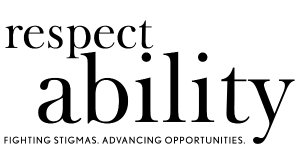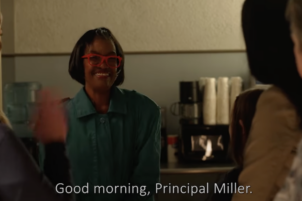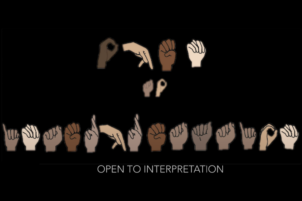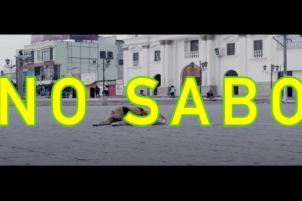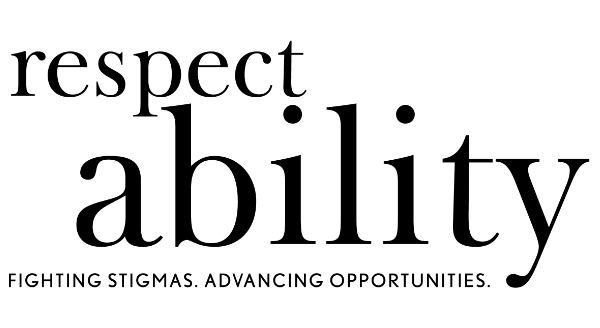Los Angeles, Feb. 9 – During the 2021 Sundance Film Festival, I was honored to be a part of a panel called “Bridging the Gap: Media Accessibility and Audio Description.” It always has been my dream to attend or be a part of the Sundance festivities. This opportunity was perfect for me, mostly since the panel was about audio description, which is a topic I am incredibly passionate about. For those unaware, audio description is a secondary audio track recorded for media that describes the action on screen between lines of dialogue for low vision and blind consumers.
The panel was hosted by Michele Spitz of Woman of Her Word as a part of RespectAbility’s Accessibility and Inclusion Lab during Sundance 2021. Spitz is a voiceover artist, public speaker, and philanthropist who is most passionate about advocating for media accessibility and disability awareness. She is dedicated to selectively funding audio description post-production accessibility grants to ensure that media content is equally accessible to low vision and blind audiences.
In Spitz’s introduction, she explained the benefits of audio description and how it creates access for disabled consumers. “If you are contributing to media and film, I would imagine you’d want to reach as many people as you can,” she said.
I am a part of this community, and I wholeheartedly agree that we want to access as much content as possible.
Spitz discussed the different ways audio description can be accessed. There are apps on your phone that sync to the media being consumed. Most movie theater chains offer head-sets that consumers can wear and hear the track. Some streaming companies also have options to listen to audio descriptions. Some forms of physical media like DVDs and Blu-rays include AD tracks.
If it’s on one of these channels, then it should be available on all. For example, if there’s an AD track on Netflix, it should be on Amazon, iTunes, the DVD and everywhere everywhere there’s a track for a movie. Getting to a place where the AD track is an asset that accompanies the film everywhere it goes would be ideal.
Ashley Eakin is a filmmaker and a RespectAbility Lab alumna. Spitz provided her a grant to ensure her short film Single is accessible to more audiences.
“I want to advocate for other disabilities,” Eakin said. “I think it’s important for the film to be accessible to all audiences. So, it’s something that Michele has really lit a fire under me to have it be a part of every project I have moving forward. And I did a production on a project recently with a studio and the first thing when we had our post conversation, I was like, this has to be audio described.”
Eakin said she has watched different films with audio description and doing so has helped her with writing as the audio description writing can be exceptionally well done and creative. Spitz also emphasized the importance of making a line in your budget for the audio description. This would help the film track when it goes to festivals or anywhere else so low vision/blind consumers can enjoy it at all levels.
Justin Smith, the manager of post-production at IFC, discovered audio description when distributing Dealt, a documentary about a blind magician. Smith said Spitz came to his office and taught his team about audio description in 2017. Since then, they have tried out additional ways to utilize audio description.
“We were able to, for the first time in our 20 year history, audio describe every single premier title in 2020 and IFC plans on doing so indefinitely,” he said. “Like Michele mentioned, this is a group of consumers that have for far too long been underrepresented. There’s been no reason why this couldn’t have happened earlier.”
Liz Gutman, an audio description writer for International Digital Center, demystified the process of writing an AD track. “I’m so proud of our writers’ room,” she said. “Everyone cares a lot about getting it right, making sure that it’s vivid.”
When asked about how to write audio description for feature films vs. episodic media, she said: “For a feature, it’s really making sure that you do enough setting of the whole stage while making sure the plot is pushed along. With episodics, it can be tricky. It’s really a mixed bag because a comedy is going to be different from a drama, it’s going to be different from a supernatural horror, thriller? What’s the best way to describe something that doesn’t exist in real life?”
Gutman added that occasionally they don’t get to watch the whole piece all at once, especially when it comes to episodic media. They often have to describe things that will come back later, then make a second pass to make sure they didn’t miss anything important.
Allyson Johnson, an audiobook and audio description narrator, added that “even though she is sighted, the audio description will describe something she didn’t even see, and she will rewind whatever she is watching to look at it again.”
She added: “If you’re a filmmaker or a television show creator, having access to audio description writers who are going to point out the things that you have thought of. You’ve probably been so meticulous about putting in your picture, don’t you want the most people possible to be able to see all of those little details and nuances? And a description writer is going to be able to point them out.”
Spitz emphasized that we need to educate students in film schools about audio description, just like we do with captions. Alice Elliott, an Academy Award-nominated documentary filmmaker who heads the Documentary Studies Area at NYU Tisch, said that she makes her students think about these things and work with an audio description and captions. “They need to get used to the idea of leaving space for these accessible necessities,” she said. “And they need to see it as a way of enhancing what they’ve already done. And so, the big challenge is not only with students but with other faculty members who don’t see it that way or haven’t had a chance to see it that way yet.”
This panel was essential in bringing awareness of audio description for filmmakers and distributors who didn’t know about it before. It helps me and other blind and low vision consumers experience films more authentically. The more films that use it and the more TV shows that use it, it would be great. Low vision and blind people like to go to the movies like everyone else. So, I think it’d be amazing to have more access to as much content as possible. I highly encourage all content creators to consider using audio description on your next project to make it accessible to all.
